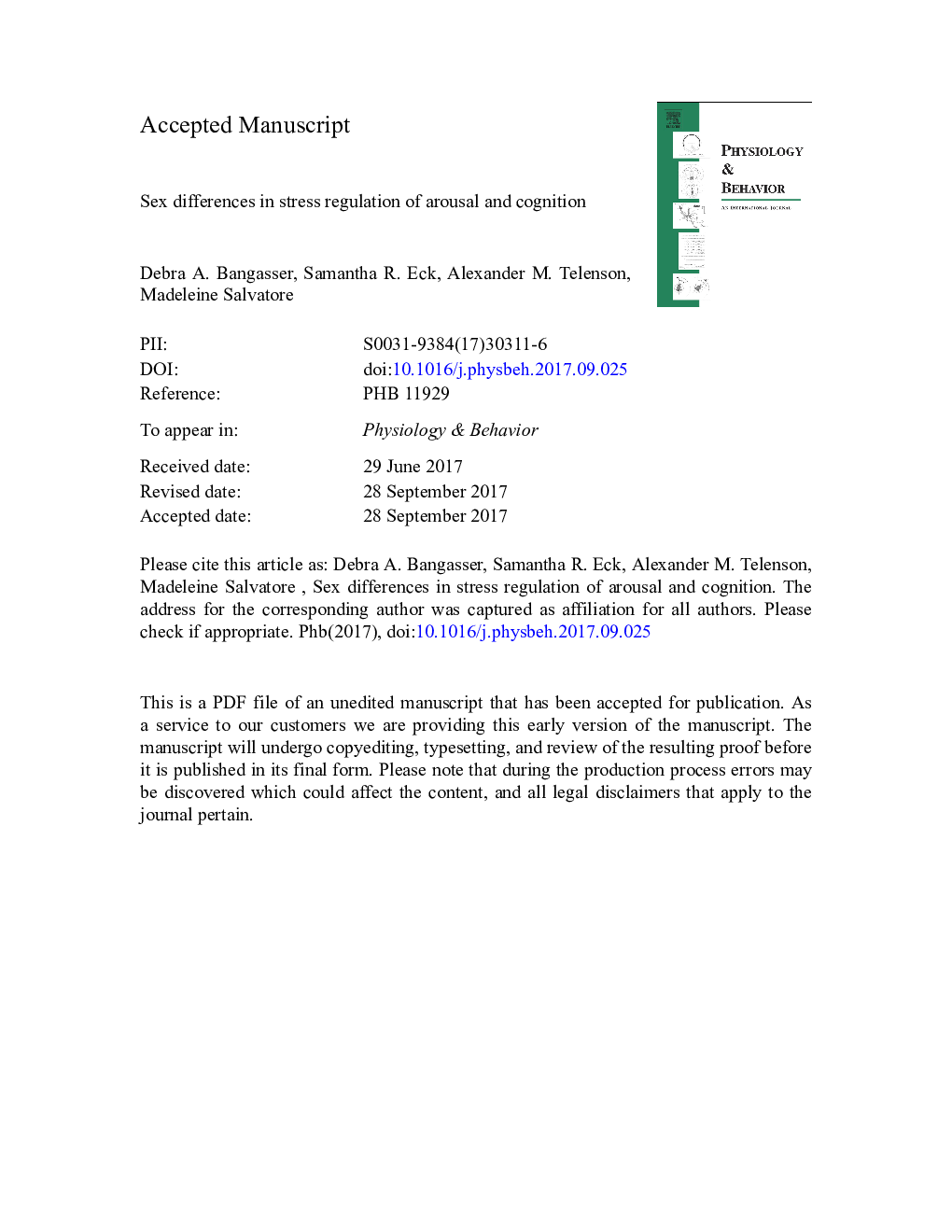| Article ID | Journal | Published Year | Pages | File Type |
|---|---|---|---|---|
| 8650621 | Physiology & Behavior | 2018 | 37 Pages |
Abstract
There are sex differences in the prevalence and presentation of many psychiatric disorders. For example, posttraumatic stress disorder (PTSD) and major depression are more common in women than men, and women with these disorders present with more hyperarousal symptoms than men. In contrast, attention deficit hyperactivity disorder (ADHD) and schizophrenia are more common in men than women, and men with these disorders have increased cognitive deficits compared to women. A shared feature of the aforementioned psychiatric disorders is the contribution of stressful events to their onset and/or severity. Here we propose that sex differences in stress responses bias females towards hyperarousal and males towards cognitive deficits. Evidence from clinical and preclinical studies is detailed. We also describe underlying neurobiological mechanisms. For example, sex differences in stress receptor signaling and trafficking in the locus coeruleus-arousal center are detailed. In learning circuits, evidence for sex differences in dendritic morphology is provided. Finally, we describe how evaluating sex-specific mechanisms for responding to stress in female and male rodents can lead to better treatments for stress-related psychiatric disorders.
Related Topics
Life Sciences
Biochemistry, Genetics and Molecular Biology
Physiology
Authors
Debra A. Bangasser, Samantha R. Eck, Alexander M. Telenson, Madeleine Salvatore,
